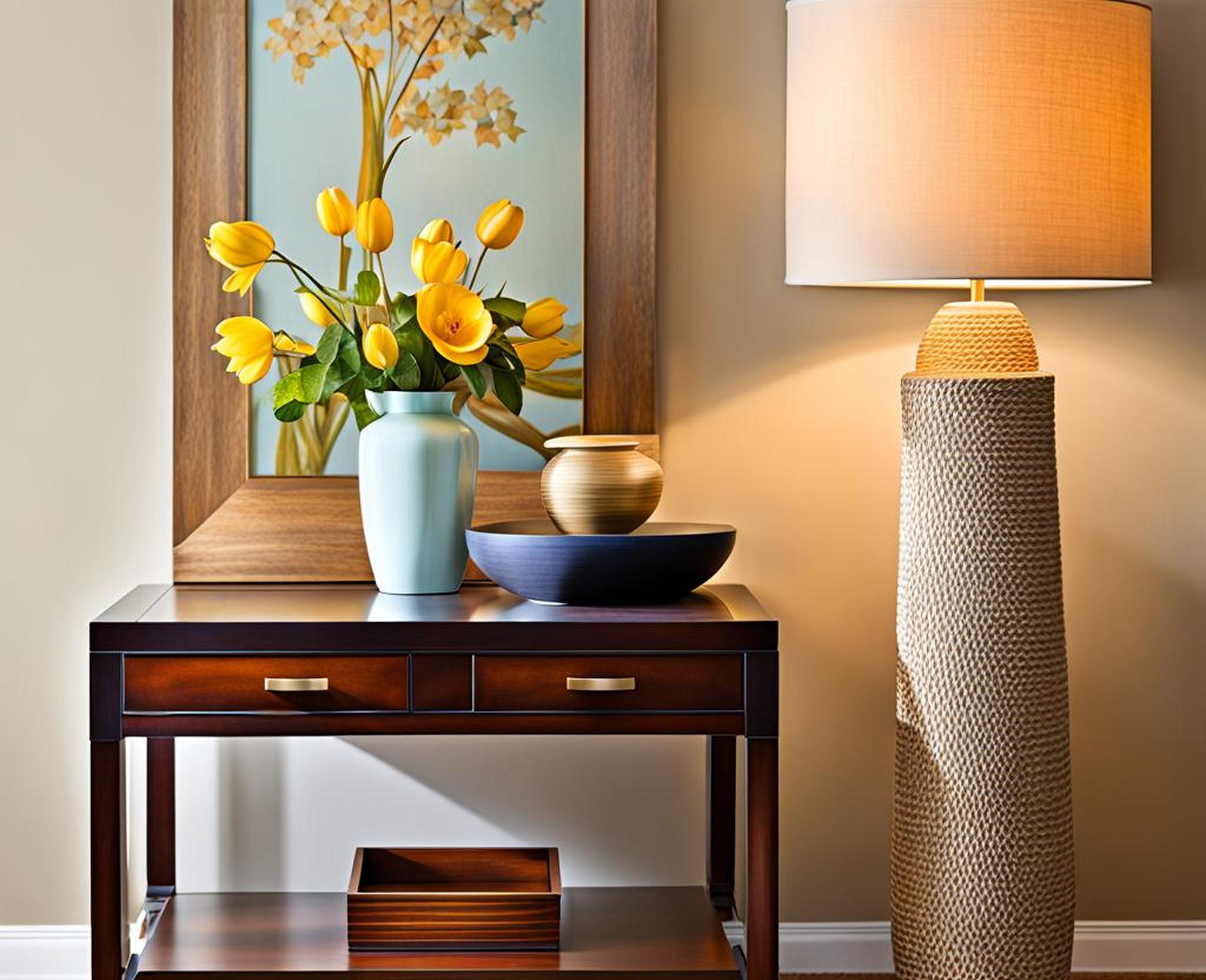Side tables serve varied purposes in homes from accent furnishings to practical nightstands. However, they present charming styling opportunities to inject personality into bedrooms or living spaces. The expansive decor options for these petite platforms sparks questions – how does one curate a cohesive look? What fundamental elements should you incorporate? Through thoughtful experimentation and a few fundamental concepts, anyone can craft a stunning side table that functions both beautifully and practically.
By following reliable decorating strategies, designing a captivating tablescape is simpler than imagined. We will explore how to seamlessly blend aesthetics, utility and personalization to build a meaningful, everyday luxury beside your bed or sofa.
Choose a Style Theme and Intended Function
Before decorating, consciously choose an overarching style theme and functional purpose for your side table. This cultivates a harmonious, curated look aligned to your needs and preferences.
Select a Decor Style
What inspires you? Common side table themes include:
- Modern – Sculptural elements, neutral palette
- Bohemian – Vibrant patterns, organic textures
- Rustic – Weathered woods, floral accents
- Coastal – Natural elements, sunny palette
Once you land on a style, stick to it in all decorative details from table lamps to books. This creates a polished, intentional look. Eclectic layers of contrasting styles risk appearing haphazard rather than collected.

Determine the Table’s Purpose
Consider your needs and wants from this table such as:
- Bedside tasks – reading, glasses, remotes
- Displaying cherished items
- Staging an elegant tea station
- Charging devices overnight
Arranging items suiting your intended uses makes this a hardworking, loved space rather than mere decor. For example, place daily essentials you reach for within arm’s length while keeping ornamentals towards the back. Thoughtfully melding form and function prevents a cluttered or confusing tablescape.
Essential Decorating Elements
Certain fundamental elements enrich side tables despite your chosen theme. Incorporate these for an instantly elevated look.
Incorporate Proper Lighting
Lighting serves both atmospheric and functional aims. Table lamps provide directed illumination for bedtime reading or filling out paperwork while also setting a desired mood. Consider a:
- Floor lamp for ambient lighting
- Table lamp for task illumination
- Dimmer to control brightness
Choose size, design and shade material aligning with your decor. For small tables, opt for narrow, vertically oriented lamps. Prioritize easy-to-use switches and angled heads for adjustability.
Use Meaningful Personal Touches
Infuse personality into your vignette with special items sparking joy or memory. Photographs uniquely represent cherished relationships and adventures without appearing kitschy or random. Further personalization can derive from:
- Sentimental curios
- Travel mementos
- Collection pieces
Artfully arrange these in harmony with other items instead of creating clutter. Aim for one or two personalized accessories to integrate versus overwhelming the tablescape.
Don’t Overlook Greenery
Greenery energizes environments through purified air, appealing nature-inspired palettes and introducing natural shapes. Top options for side tables include:
| Succulents | Withstand irregular watering suited to bedside tables |
| Air plants | Thrive mounted without soil |
| Snake plant | Cleans air while tolerating low light |
Select slow-growing plants aligned to available light requirements and care abilities. Consider self-watering pots or mounted air plant displays to minimize maintenance.
Elevate With Styling Techniques
Further enhance your table by incorporating design principles professionally employed by interior stylists.
Experiment with Heights and Layering
Introduce dimension while punctuating focal points through vertical stacking. Suggested layering format:
| Bottom | Largest items like stacks of books |
| Middle | Mid-sized objects such as trays |
| Top | Smallest decorations like bud vases |
Don’t limit to 3 flat layers; create numerous staggered levels building upwards for an artful composition. Shuffle items assessing proportions until visually balanced.
Play with Color and Texture
Interest arises from contrasting or complementary colors and textures. Consider:
- Pairing smooth ceramics with nubby knits
- Combining a matte terra cotta planter with a glossy ceramic catch-all tray underneath
- Introducing black accents to white tablescapes for bold definition
Additionally, limit colors to a tight palette for polish. Jewel tones, naturals and neutrals currently remain most on-trend.
Mind the Balance and Weight
Prevent tipping accidents or eyesores by checking:
- Overall visual weight distribution
- The table’s physical stability when bearing stacked objects’ load
- Proportions suit the surface area
Bigger tables tolerate larger scale accessories or heavier weighted styling on one side – such as a sturdy stack of art books. Redistribute bulk evenly on petite platforms to align the tablescape’s center axis with the table’s.
Developing a fabulous side table cyclically nurtures and inspires. Curate slowly, gradually refining your personalized sanctuary filled only with beloved items sparkling visual joy and happy memories. Thoughtfully incorporate fundamental design tactics balancing form and function for a polished yet personal look. Soon, your bedside or end table evolves into a cherished reflection of you.
Now turn introspective – what calls you for your special tablescape? Bohemian textures, coastal materials or modern sculptural light fixtures? Allow your inner creative vision to freely translate into this intimate, daily space.
